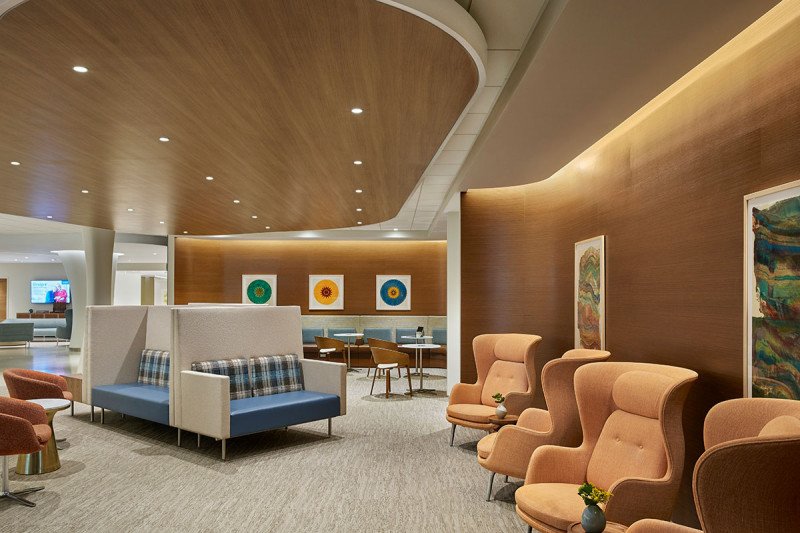
Memorial Sloan Kettering Bergen has received LEED Gold certification from the US Green Building Council (USGBC). According to the USGBC, “LEED (Leadership in Energy and Environmental Design) is the most widely used green building rating system in the world” and “provides a framework for healthy, highly efficient, and cost-saving green buildings. LEED certification is a globally recognized symbol of sustainability achievement and leadership.”
MSK has a strong commitment to sustainability to reduce the environmental impact of our facilities and operations at our locations in New York and New Jersey. We thoughtfully design our facilities to reduce energy use, material consumption, and waste to create a healthy environment for patients, staff, and our community.
Building on the legacy and success of our other sites, the design of MSK Bergen includes several features that conserve natural resources, minimize greenhouse gas emissions, and promote wellness. Check out these sustainable features:
- High-performance heating and air conditioning systems, equipment, and lighting fixtures reduce the building’s energy consumption by 19% compared to a traditional system.
- Low-flow plumbing fixtures reduce the building’s water consumption by more than 35% compared to Environmental Protection Agency (EPA) standards.
- Ventilation rates were increased by 30% above the industry standard to provide superior indoor air quality.
- Through a multi-year commitment, MSK purchased green electricity via RECs (renewable energy credits), covering 70% of the building’s annual usage. This supports local development, and the use of renewable energy technologies reduces the air pollution impact of electricity generation.
- More than 85% of construction waste was recycled or diverted from landfills.
- The building’s updated design maintained over 95% of the original structure.
-
To promote healthier indoor air quality and reduce environmental impacts, new building materials are more sustainably and locally sourced, with high recycled content and low or zero Volatile Organic Compounds (VOCs). Some of these materials include:
- rubber floor and wall base — rapidly renewable, natural rubber, low VOCs, and recyclable
- carpet tile — 42% recycled content in the backing and low VOCs
- wallcoverings and paint — zero and low VOCs
- wood — sustainably harvested, without VOCs or added urea-formaldehyde
-
MSK selected furnishings and furniture to minimize lifelong environmental impacts and promote occupant health. Materials selected strive to:
- reduce manufacturing- and transportation-related carbon emissions
- avoid chemicals that may have adverse health impacts for occupants
- use materials made from recycled content
- be easily disassembled to facilitate end-of-life recycling
- apply ergonomic design to all seating and workstations
- To inspire wellness, the open design of the central lobby stairs encourages walking in lieu of using elevators when possible.
- Bicycle storage and showers are provided to staff to support biking as an alternate option for commuting to work.
- Dedicated parking spaces are reserved for carpooling and fuel-efficient vehicles, promoting more sustainable transportation methods.
Surrounding the building are various exterior features, including walking paths and abundant vegetation, providing an opportunity for patients, visitors, and employees to spend quality time outside connecting to nature. This biophilic feature can help reduce stress and enhance the healing process.